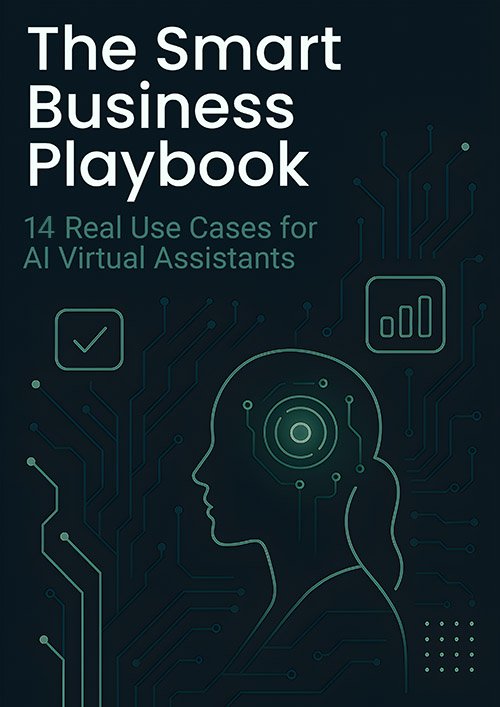To excel in global talent acquisition, start by crafting a strategy that leverages a diverse talent pool and aligns with your growth goals. Immerse yourself in regional job markets to understand local laws and cultural nuances. Employ technology like AI and Talent CRMs to streamline recruitment, and adapt flexible work models to attract top candidates. Collaborate closely with hiring managers and continuously evaluate your recruitment metrics like time to hire and quality of hire. Offer competitive, locally-tailored benefits and prioritize diversity to drive innovation. As you refine these practices, you’ll reveal further insights into enhancing your talent acquisition strategy.
Key Takeaways
- Foster a diverse workforce to drive innovation and maintain a competitive edge globally.
- Leverage local market insights and compliance expertise for effective recruitment practices.
- Offer flexible work arrangements and competitive benefits to attract global candidates.
- Utilize technology like AI and Talent CRMs for efficient recruitment processes.
- Regularly evaluate recruitment metrics and adjust strategies to align with market demands.
Understanding Global Talent Acquisition

When it comes to understanding global talent acquisition, it’s all about tapping into a world of opportunity.
You’re not limited to local talent; instead, you can access a diverse pool of professionals worldwide. This approach is essential for gaining a competitive edge, as it allows you to strategically recruit individuals with unique skills and experiences. With the increasing demand for specialized skills not available locally, organizations are driven to look beyond their borders to meet these requirements. By focusing on global talent, you meet long-term needs and support expansion goals across international borders. Guiding through cultural norms, immigration laws, and language barriers is part of the process, but the benefits outweigh these challenges. Additionally, leveraging data-driven insights can help streamline your recruitment strategy and enhance decision-making.
Embracing global talent acquisition guarantees you’re prepared for future demands, bringing fresh perspectives and enhancing your organization’s adaptability in an ever-evolving marketplace.
Crafting a Global Strategy
Crafting a global strategy for talent acquisition begins with recognizing the vast potential that lies beyond local borders. You need to analyze both short-term and long-term hiring needs to align with your business’s growth trajectory. Assess your current workforce, pinpoint key positions and skills essential for expansion, and identify promising markets for new locations. Understanding regional job markets is vital; familiarize yourself with local labor laws and cultural nuances. The importance of a diverse workforce for innovation and competitiveness cannot be overstated, as it significantly enhances team dynamics and problem-solving capabilities. Additionally, leveraging tailored tools can simplify the process of identifying and acquiring the right talent across different regions. Network with regional recruiters and tailor your strategies to each unique context. Develop a strategic workforce plan that addresses business goals and skills gaps. Establish clear metrics and KPIs to measure success and refine your strategy. By doing so, you’ll position your organization for global talent acquisition success.
Embracing Effective Practices

Successful global talent acquisition hinges on embracing effective practices that adapt to diverse markets and cultures. You need to understand local markets deeply, acknowledging that recruitment practices and employee values differ widely. Strategic workforce planning is crucial; it helps identify business goals and skills gaps, ensuring that the right talent is sourced for future needs. Consult local experts to guarantee compliance with labor laws and cultural nuances. Be flexible by considering remote work options and multiple target locations. Additionally, consider how partnership programs can help you expand service offerings and improve recruitment strategies.
Leveraging technology effectively is essential. Use global applicant tracking systems and AI chatbots to enhance engagement, and streamline hiring with data-driven processes.
Building strong employer branding is also significant. Showcase your commitment to diversity, offer competitive local salaries, and promote a positive workplace culture.
Here’s how to effectively approach global talent acquisition:
- Understand local markets and cultures.
- Leverage technology for efficiency.
- Build a strong employer brand.
Strategic Talent Sourcing
Although maneuvering the complexities of global talent acquisition can be intimidating, adopting strategic talent sourcing methods transforms this challenge into a competitive advantage.
By focusing on key roles and skill sets, you build a robust talent pipeline tailored to your organization’s needs. You proactively seek talent through diverse channels like social media and professional networks, engaging and nurturing relationships with potential candidates. Strategic sourcing aligns with strategic workforce planning, ensuring that you identify talent early and mitigate future skill shortages.
This approach reduces your time-to-hire and costs, guaranteeing quality hires that align with company values. Utilizing technology, like AI and Talent CRMs, streamlines your process and improves efficiency.
Collaborate with hiring managers to guarantee alignment and use metrics to refine your strategy. Ultimately, strategic talent sourcing positions you to outpace competitors by securing top talent efficiently.
Attracting and Retaining Candidates

To attract and retain top candidates in today’s competitive market, you must offer compelling benefits packages that meet diverse needs. Embrace flexible work arrangements to appeal to a global workforce seeking balance and autonomy. Clearly defined career paths won’t only attract ambitious talent but also foster long-term loyalty and motivation. Prioritizing diversity in recruitment strategies ensures innovation and inclusivity, creating a workplace that supports varied backgrounds and perspectives.
Competitive Benefits Packages
When you’re aiming to attract and retain top global talent, offering competitive benefits packages can make all the difference. Understanding local expectations and providing supplemental benefits beyond statutory ones shows you care about employee well-being.
Here’s how you can stand out:
- Tailor Your Benefits: Customize packages to align with diverse traditions and lifestyles, fostering an inclusive environment. This means understanding what local employees expect and offering those benefits.
- Go Beyond Basics: Provide extensive health care, including dental and vision care, and support for specialized needs like high-risk pregnancies.
- Support Families: Offer childcare and family support, such as maternity coverage and relocation assistance, to make your company more appealing. Statutory benefits ensure compliance with local labor laws, while comprehensive benefits packages correlate with increased job satisfaction and loyalty, making them essential for competitive talent acquisition.
Compliance with local labor laws guarantees credibility, while market research helps you create irresistible offers.
Flexible Work Arrangements
Embracing flexible work arrangements is a strategic move to attract and retain top global talent. Flexibility empowers you to tap into a broader talent pool, accommodating diverse needs and skills. By offering remote work, flexible hours, and hybrid models, you not only boost employee satisfaction but also strengthen your employer brand. Highlight these options in recruitment materials to appeal to forward-thinking candidates who value work-life balance. Flexible work arrangements enhance employee satisfaction and retention rates, attracting diverse talent pools and backgrounds.
| Flexible Work Type | Benefit to Organization |
|---|---|
| Remote Work | Access global talent, reduce overhead |
| Flexible Hours | Improve employee satisfaction |
| Hybrid Models | Accommodate diverse work styles |
| Contract Work | Access specialized skills |
| Freelance | Flexibility in workforce demand |
Adopting flexibility isn’t just a trend; it’s a long-term investment that guarantees your organization stays adaptive and competitive.
Clear Career Paths
While flexible work arrangements draw interest from a wide talent pool, clear career paths solidify your organization as a long-term career destination. By defining career pathways, you align your workforce’s development with business goals, ensuring mutual growth and satisfaction. Here’s how you can enhance your talent acquisition strategy:
- Skill Gap Analysis: Conduct thorough evaluations of your current workforce and future needs to pinpoint skills gaps, ensuring you attract candidates who can drive success. Regular audits of hiring practices ensure adherence to regulations, which is crucial for maintaining compliance in global talent acquisition.
- Mentorship and Development: Introduce mentorship programs and offer professional development opportunities like training or tuition reimbursement to foster continuous learning.
- Inclusive Culture and Feedback: Create a supportive, inclusive culture with regular check-ins and surveys to address employee concerns, making your organization more attractive and retaining talent over the long haul.
Evaluating Acquisition Success
How do you know if your talent acquisition process is truly successful? Start by focusing on key performance indicators (KPIs) like Time to Hire, Cost per Hire, and Quality of Hire. These metrics provide a thorough view of the process’s effectiveness. Quality of Hire should be your top priority, as it evaluates new hires’ performance and longevity. Use data analytics to gain insights into job competencies and candidate potential. Regularly benchmark your metrics against industry standards, adjusting strategies as needed. Incorporate tools like the Hiring Success Business Assessment to evaluate your processes, people, and technology. Remember that building a stellar talent acquisition strategy requires time and resources, so continuous evaluation and refinement are essential for achieving long-term success.
Continuous Improvement Strategies

To elevate your recruitment processes, harness performance data to pinpoint areas needing refinement. By analyzing this data, you can make strategic adjustments that align with evolving market demands and enhance overall efficiency. Adopting a proactive approach to strategy adjustment guarantees you’re always one step ahead in attracting top talent. Global talent acquisition strategies are designed to identify, attract, and hire talent from around the world, leveraging international resources to fill skill gaps.
Performance Data Analysis
As you explore performance data analysis for continuous improvement in global talent acquisition, leveraging extensive metrics is essential. By focusing on key performance indicators (KPIs), you can refine recruitment strategies and enhance success rates.
- Monitor and Refine: Track response rates across various outreach channels to identify where candidates are most engaged. This allows you to allocate resources effectively.
- Optimize Processes: Use completion rates at each hiring stage to pinpoint where candidates drop off, enabling you to streamline the process and reduce time-to-hire.
- Enhance Offer Appeal: Analyze survey feedback from both accepted and declined offers. Adjust compensation and benefits strategies based on these insights to attract and retain top talent.
Additionally, engaging candidates from diverse backgrounds is crucial, as it brings fresh perspectives and innovation, enhancing problem-solving capabilities and adaptability. Being data-driven guarantees your talent acquisition approach remains competitive and effective.
Strategy Adjustment Techniques
Building on the insights gained from performance data analysis, adjusting your strategies is pivotal for maintaining a competitive edge in global talent acquisition.
Conduct thorough evaluations of recruitment processes to pinpoint improvement areas. Regularly update job requirements for clarity and relevance, and streamline application processes to minimize candidate drop-off. Prioritize roles that require immediate hiring attention to ensure that pressing organizational needs are met promptly.
Harness a robust applicant tracking system to manage your talent pool effectively, guaranteeing proactive engagement with potential candidates. Use targeted sourcing to broaden your reach, and incentivize employee referrals.
Enhance candidate experience by maintaining clear communication, providing transparent interviews, and structured onboarding.
Embrace continuous improvement by collecting feedback from candidates and hiring teams, implementing feedback loops, and collaborating with related teams to guarantee adjustments align with organizational needs.
Conclusion
As you navigate the vibrant tapestry of global talent acquisition, picture yourself as an artist crafting a masterpiece. With strategic strokes, you blend cultural nuances and innovative sourcing techniques, creating a vivid portrait of success. By attracting and retaining top talent, your organization becomes a beacon of opportunity.


